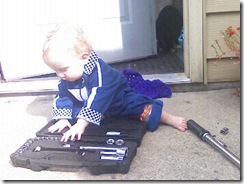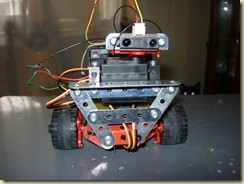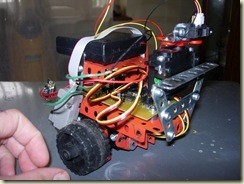A few weeks ago I popped into my new bank to make a deposit. I handed the money and my driver's license the teller. She blinked at me. "I need to make a deposit" I explained. The poor woman looked stricken.
"You need a deposit slip to make a deposit." I could swear she was smirking at me. Unfortunately I didn't know my account number. This had never happened at my other bank. After much haggling I extracted my account number and a blank slip from her, which she insisted that I complete myself at the counter. Why was a deposit slip such a necessity? She couldn't explain it, other than to tell me the computer required the slip. The look on her face told me that she wasn't inclined to explain anything to me without just cause. By the way, her name was "Joy". That's an irony.
With the installation of the first computer used by bank tellers began the demise of customer service. No longer was a person faced with the prospect of telling a customer "I don't want to help you." Instead, a person could simply declare "The computer won't let me!" The much maligned computer began its trek as a customer service scapegoat.
Now that we have computers everywhere, customer service suffers accordingly. Programmers such as myself typically write programs in a way that makes it difficult (preferably impossible) for people to enter data or complete operations that we don't like. Sure, situations may warrant a personal touch , but we have made the assumption that the person using the computer doesn't know their job as well as we do. We're saving them from their own mistakes. I can't imagine why people claim that programmers have poor communications skills.
This idea has been taken to such an extreme that we have millions of workers who are not allowed to make decisions. They are not allowed to use their own judgment. The don't have the latitude to solve problems, because our society is afraid they might make the wrong decision. And they would, once in a while.
Empowerment happens when we begin to trust people to understand their own jobs, and make the right decisions. Empowerment improves customer service because the employee has the latitude to do the right thing.
I was saddened about the recent death of a woman in the Phoenix airport. Disclaimer: Carol Ann Gotbaum should have been escorted by a family member.
She was approximately one minute late for boarding her flight, and they wouldn't let her on. Supposedly she wasn't allowed to trade flights with another passenger for "security reasons". What if someone had taken the time to realize that she had an emergency? What if that person had been willing and able to help her? Make no mistake about it. An airport is an awful, lonely, terrifying place to be left. Especially for someone en route to a substance abuse treatment facility.
It isn't good enough not to help each other. This craziness has to stop. Let's give our employees the latitude to do the right thing, and let's start expecting people to do more than perform the bare minimum to keep their jobs. A simple smile and exchange of pleasantries can go a very long way. I think it would have done an immeasurable amount of good for Ms. Gotbaum.
Update: I just checked my RSS feeds, and Seth Godin seems to be on a similar page today.
 couple of weeks ago she seemed very tired, so we put her in bed for a nap. We waited for the noise from her room to subside, then we crept back to our desks.
couple of weeks ago she seemed very tired, so we put her in bed for a nap. We waited for the noise from her room to subside, then we crept back to our desks.
